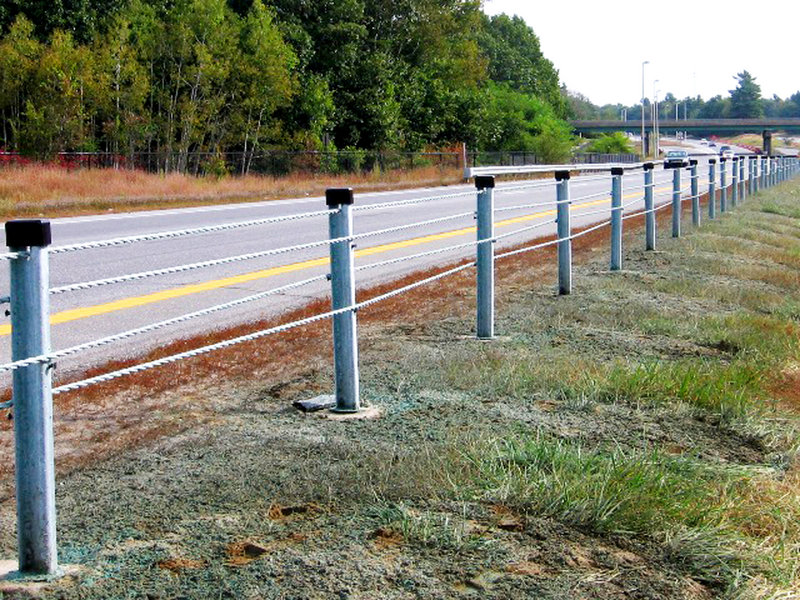Taut cables strung between metal posts now line stretches of Interstate 295, to prevent some of the state’s most lethal crashes.
The systems, called median cable guardrails, are new to Maine but are popular in other parts of the country where the median between lanes of divided highways is narrow.
“The most devastating crash type you can think of is a head-on crash,” said Duane Brunell of the Maine Department of Transportation’s safety office. “When you look at narrow medians, that vulnerability exists, and when you’re talking about opposing speeds of 65 and 75 mph, that’s not a pretty picture.”
The state is upgrading the interstate from Portland to Freeport, and the cable guardrails have been added north of Portland as the work has been done. They also have been installed along divided sections of Route 1 between Brunswick and Bath.
As other parts of the state’s highways are repaired, the cable systems are likely to be installed, Brunell said.
The guardrails consist of four taut cables strung between posts that break away in a crash. The cables are strong enough to stop a car or even a truck, Brunell said, but they absorb much of the force, giving them two advantages over standard metal W-beam guardrails.
Absorbing the impact of a crash reduces injuries and it makes it less likely that a vehicle will bounce back into the road, Brunell said.
“It’s designed to almost capture the vehicle and keep it out of harm’s way,” he said.
Standard metal guardrails or concrete barriers are still necessary in spots where the median slopes down sharply, he said.
The cable system costs less than standard metal guardrails.
A study by Michigan’s transportation department showed that high-tension cable guardrails cost about $15 per foot, while W-beam metal guardrails cost twice that and concrete barriers cost $80 per foot.
There are maintenance costs, but the system can be repaired quickly after a crash.
The installation is part of an $8.4 million improvement project on I-295 from Portland to Freeport. That stretch was chosen to get the guardrails because of the ongoing work there, and because of spectacular crashes there in recent years, including fatalities.
The cable guardrails are a major improvement over the old-fashioned wire guardrails, which consisted of a fat wooden post — a deadly obstacle in itself — and a single, loose metal cable, Brunell said.
He said the design of the new barriers is strictly functional, but he also finds them aesthetically more pleasing than the alternatives.
“Instead of looking at an 18-inch-wide rail, you have four cable runs, which opens up your view a little bit,” he said.
Staff Writer David Hench can be contacted at 791-6327 or at: dhench@pressherald.com
Send questions/comments to the editors.



Success. Please wait for the page to reload. If the page does not reload within 5 seconds, please refresh the page.
Enter your email and password to access comments.
Hi, to comment on stories you must . This profile is in addition to your subscription and website login.
Already have a commenting profile? .
Invalid username/password.
Please check your email to confirm and complete your registration.
Only subscribers are eligible to post comments. Please subscribe or login first for digital access. Here’s why.
Use the form below to reset your password. When you've submitted your account email, we will send an email with a reset code.